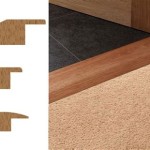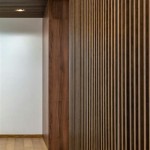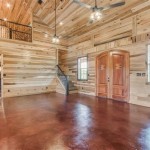How to Soundproof Existing Interior Walls
Unwanted noise within a home or building can be disruptive and uncomfortable. Thankfully, there are effective methods to soundproof existing interior walls and restore tranquility.
Understanding Sound Transmission
Before exploring soundproofing techniques, it's crucial to understand the mechanisms of sound transmission through walls:
- Airborne Sound: Sound waves from sources like conversations or music travel through the air, causing vibrations on wall surfaces.
- Impact Noise: Occurs when objects hit walls, creating vibrations that transmit through the structure.
- Flanking Transmission: Sound travels through other pathways around the wall, such as pipes or electrical outlets.
Soundproofing Methods
To address these types of noise, several soundproofing methods can be employed:
1. Mass Loaded Vinyl (MLV)
MLV is a heavy, flexible material that can be added to existing walls. Its high density damps vibrations and absorbs airborne sound.
2. Acoustic Panels
These panels are typically made from sound-absorbing materials like fiberglass or foam. They can be attached to walls or hung as curtains to absorb and scatter sound waves.
3. Resilient Channel System
A resilient channel system involves attaching furring strips to the existing wall, creating a buffer space. Soundproof insulation is placed within the space, reducing vibration transmission.
4. Decoupling Techniques
Decoupling involves separating wall components to prevent sound from bridging between them. Using sound clips or isolation pads between framing and drywall can effectively reduce vibration transfer.
5. Sealants and Caulk
Sealing gaps around windows, doors, and outlets with acoustic sealants or caulk prevents flanking noise transmission.
6. Wall Insulation
Filling wall cavities with sound-absorbing insulation, such as fiberglass or cellulose, can significantly reduce sound transmission.
7. Double Drywall
Adding a second layer of drywall with staggered seams enhances the soundproofing effect by increasing mass and dampening vibrations.
Additional Considerations
When soundproofing existing walls, consider the following:
- Wall Thickness: Thicker walls generally provide better soundproofing.
- Room Purpose: Different rooms may require varying degrees of soundproofing.
- Budget: Soundproofing methods can vary in cost, so it's important to consider the budget.
- Professional Installation: For complex or extensive soundproofing projects, hiring a professional is advisable.
Conclusion
Soundproofing existing interior walls is a viable solution to reduce noise pollution and create a more peaceful environment. By understanding sound transmission and implementing effective methods, you can effectively control unwanted noises and enhance your living or working space.

Wall Soundproofing How To Soundproof Your Netwell

Wall Soundproofing How To Soundproof Your Netwell

Wall Soundproofing How To Soundproof Your Netwell

9 Diy Ways Of Soundproofing Existing Walls Reduce Noise Through

How To Soundproof Existing Walls With Insulation South Austin Drywall

How To Soundproof Walls 8 Methods For New And Existing

How To Soundproof A Wall Achieve Higher Stcs On Your Demising

How To Soundproof A Stud Wall Simple Guide

How To Soundproof Existing Walls Guide For Soundproofing Closed

9 Ways To Soundproof An Existing Internal Wall
Related Posts








